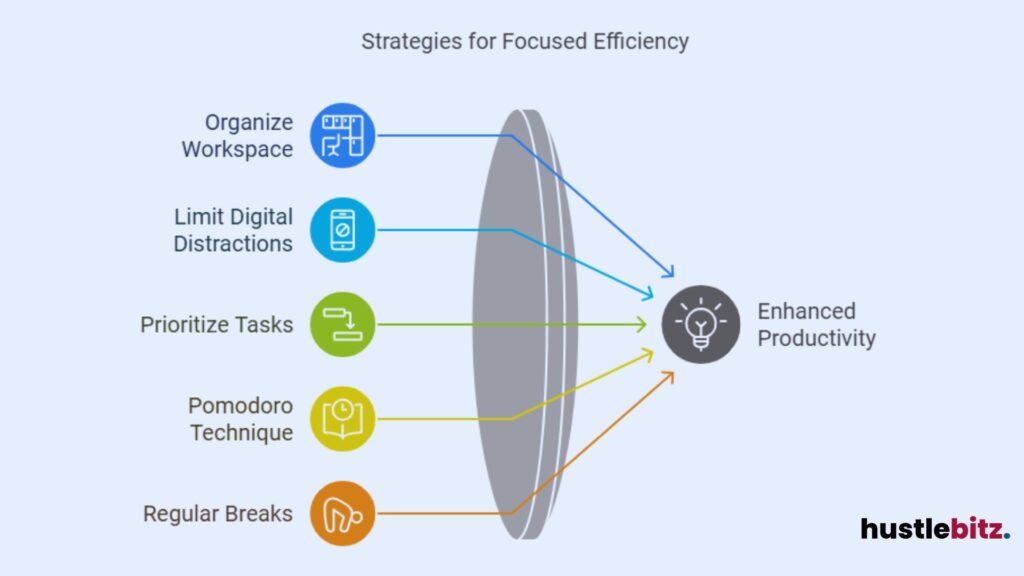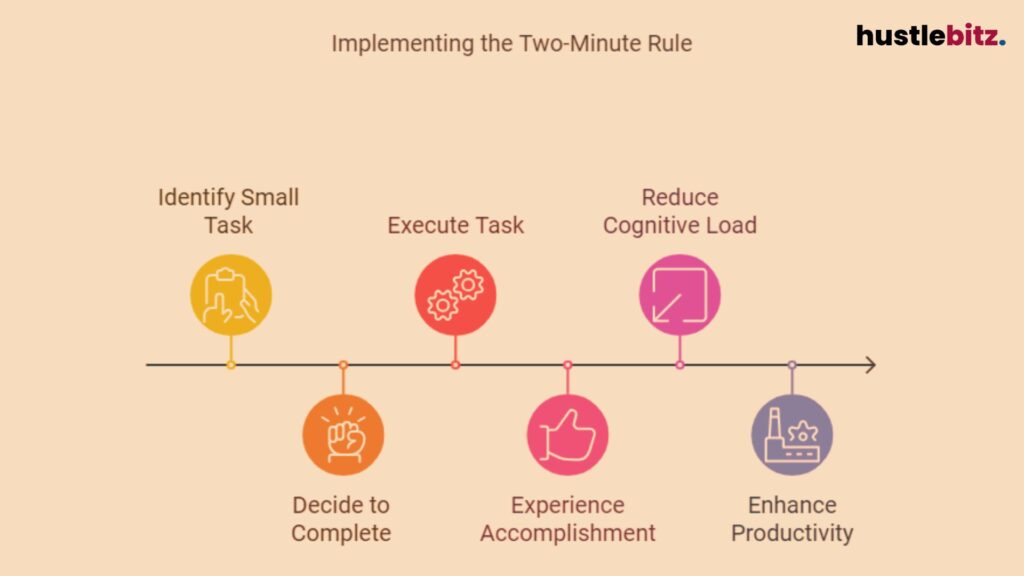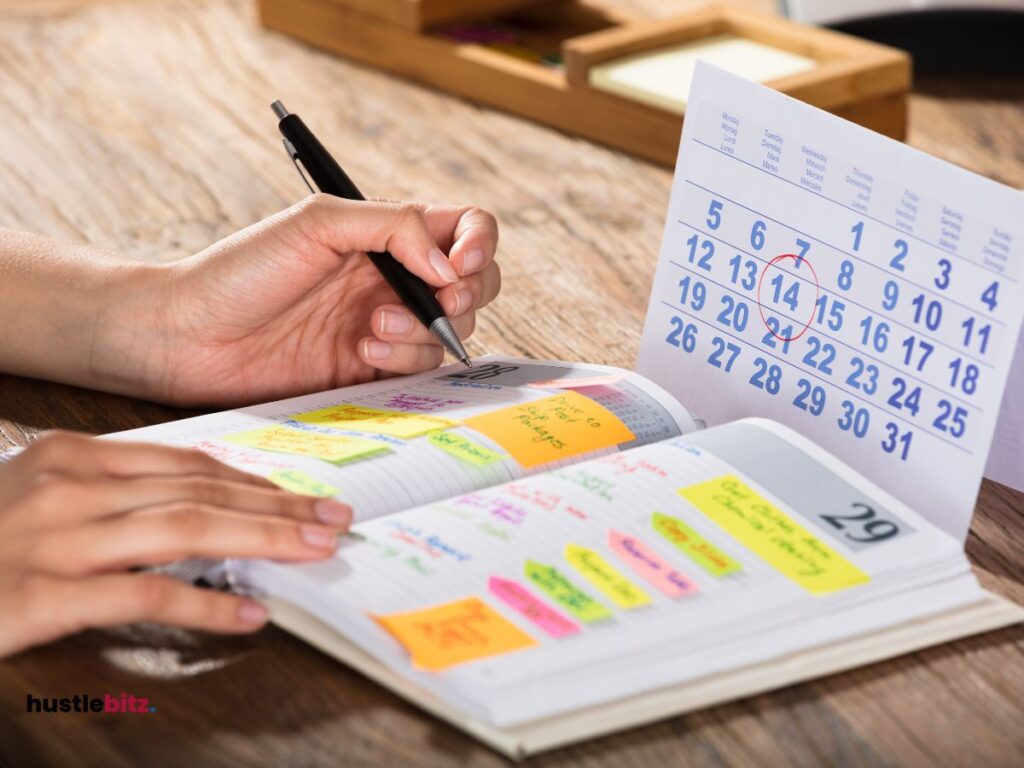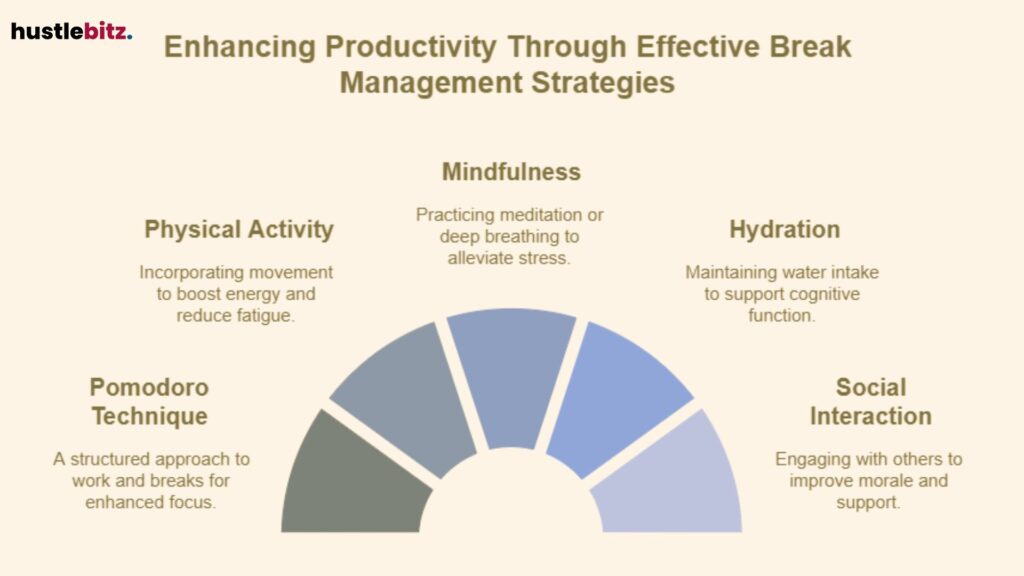To maximize productivity, implement simple adjustments in your workspace and time management. Start by streamlining your workspace to minimize distractions and organize essential items. Utilize the Eisenhower Matrix to prioritize tasks and adopt time-blocking for focused work sessions. Limit digital distractions by designating specific times for emails and using website blockers. Practice the Pomodoro Technique to maintain concentration through structured work and breaks. Finally, taking regular breaks replenishes focus and prevents burnout. These strategies can significantly enhance efficiency, and further insights will guide you on optimizing your workflow even more effectively.
Key Takeaways
- Organize your workspace by categorizing items into zones and utilizing organizational tools to minimize distractions and enhance productivity.
- Limit digital distractions by designating specific times for checking emails and utilizing website blockers to maintain focus.
- Prioritize tasks using the Eisenhower Matrix to determine which tasks require immediate action and which can be scheduled or delegated.
- Implement the Pomodoro Technique by working in focused intervals of 25 minutes followed by short breaks to boost concentration and energy.
- Regularly take breaks to recharge and improve cognitive function, incorporating strategies like stretching or mindfulness to enhance overall productivity.

Streamline Your Workspace

To enhance productivity, organizing and decluttering your workspace is essential for creating an environment conducive to focus and efficiency. A streamlined workspace minimizes distractions and fosters a sense of control over one’s tasks, allowing individuals to stay focused on their objectives.
To achieve this, begin by assessing the current state of your work environment. Identify items that are essential and eliminate those that serve no purpose in your daily workflow.
One effective productivity tip is to categorize your workspace into zones. Designate specific areas for different activities, such as a dedicated space for computer work, a reading nook, or a section for brainstorming. This delineation helps in mentally associating particular tasks with specific spaces, thereby enhancing your ability to work more efficiently.
Additionally, utilize organizational tools such as trays, folders, and digital apps to keep items sorted and accessible. Ensure that frequently used materials are within arm’s reach, while less critical items can be stored away to reduce visual clutter.
Regularly reevaluating your workspace is also vital; set aside time weekly or monthly to assess what is working and what needs adjustment.
Ultimately, a well-organized workspace not only contributes to improved productivity but also promotes a more positive work environment. By implementing these strategies to streamline your workspace, you create a foundation that empowers you to focus on what truly matters, paving the way for enhanced performance and satisfaction in your professional endeavors.
Prioritize Tasks with the Eisenhower Matrix
Prioritizing tasks effectively can significantly enhance productivity, and one of the most efficient methods to achieve this is by employing the Eisenhower Matrix. This powerful time management tool categorizes tasks into four quadrants based on urgency and importance, allowing individuals to identify what truly requires their attention.
The first quadrant consists of tasks that are both urgent and important. These are your top priorities that need immediate action.
The second quadrant includes important but not urgent tasks, which are essential for long-term goals and should be scheduled for later.
The third quadrant contains tasks that are urgent but not important, often distractions that can be delegated to others.
Finally, the fourth quadrant comprises neither urgent nor important tasks, which can usually be eliminated or postponed.
By using the Eisenhower Matrix, individuals can effectively prioritize tasks, ensuring they focus on one task at a time without becoming overwhelmed. This method not only enhances decision-making but also helps in setting goals that align with personal and professional aspirations.
Incorporating this productivity hack into your daily routine can lead to better time management, as it forces you to assess the true value of each task on your to-do list.
Ultimately, by clearly distinguishing between what matters and what does not, you can streamline your efforts and maximize productivity. Embracing the Eisenhower Matrix can transform how you approach your daily responsibilities, paving the way for sustained efficiency and success.
Adopt Time-Blocking

Adopting time-blocking as a productivity strategy allows individuals to allocate specific periods for focused work on tasks, minimizing distractions and enhancing efficiency. This method encourages a structured approach to managing your time effectively, ensuring that you prioritize productive work and allocate dedicated intervals for each task. By segmenting your day into blocks, it becomes easier to stay on track and maintain focus.
To implement time-blocking successfully, consider the following elements:
| Time Block | Activity | Purpose |
| 9:00 AM – 10:00 AM | Deep Work on Project A | Focused effort on high-priority tasks first |
| 10:15 AM – 11:00 AM | Team Meetings | Collaboration and communication |
| 11:15 AM – 12:00 PM | Email and Administrative Tasks | Manage your time by addressing quick tasks |
By defining distinct blocks for activities, you can effectively manage your workload and reduce the cognitive load associated with task-switching. This approach enables you to prioritize tasks first, ensuring that critical assignments receive the attention they deserve. Furthermore, committing to time blocks helps cultivate discipline, allowing you to resist the temptation of distractions that may arise throughout the day.
Incorporating time-blocking into your daily routine can transform your productivity, making it easier to accomplish goals while maintaining a healthy work-life balance. Embrace this technique to unlock your potential and maximize your effectiveness in both professional and personal endeavors.
Embrace the Two-Minute Rule

Embracing the Two-Minute Rule can significantly enhance productivity by encouraging individuals to tackle small tasks immediately rather than postponing them. This principle, popularized by productivity expert David Allen, suggests that if a task takes two minutes or less to complete, it should be done right away. By doing so, you can effectively clear your to-do list while simultaneously boosting your productivity.
Implementing this rule helps manage your energy by preventing the accumulation of minor tasks that can become overwhelming over time. When you complete these small tasks promptly, you create a sense of accomplishment that can motivate you to work more effectively on larger projects. Furthermore, addressing these quick tasks helps you stay on task, as it minimizes the cognitive load associated with remembering unfinished items.

For instance, responding to a short email, filing a document, or making a quick phone call can all fall under the Two-Minute Rule. By taking the initiative to complete such tasks as they arise, you prevent them from cluttering your mind and your schedule.
Incorporating the Two-Minute Rule into your daily routine not only enhances your efficiency but also fosters a proactive mindset. This approach cultivates a habit of swift action that can lead to a more organized and productive work environment.
Ultimately, embracing the Two-Minute Rule positions you to maximize your time and energy, allowing you to focus on more significant tasks with greater clarity and purpose.
Limit Digital Distractions
Limiting digital distractions is essential for maintaining focus and enhancing overall productivity in today’s technology-driven work environment. With the constant influx of notifications, emails, and social media updates, it is easy to lose sight of tasks at hand and succumb to procrastination. By implementing strategies to limit digital distractions, individuals can significantly improve their work productivity and create more efficient work habits.
One effective approach is to designate specific times for checking emails and messages, rather than allowing them to interrupt your workflow. This practice not only helps you stay focused but also creates a structured environment where you can allocate your attention more effectively.
Additionally, consider utilizing website blockers or apps that restrict access to distracting sites during peak work hours. By minimizing the temptation to engage with non-essential digital content, you can foster a more conducive workspace.
Creating a dedicated workspace free from unnecessary technology is another strategy that can help you stay focused. This means turning off notifications for non-urgent applications and keeping your phone out of reach while working on critical tasks.
Furthermore, taking regular breaks to disconnect from screens can refresh your mind and help curb the urge to procrastinate.
Practice the Pomodoro Technique

The Pomodoro Technique is a time management method that enhances focus and productivity by breaking work into intervals, traditionally 25 minutes long, separated by short breaks. This structured approach encourages individuals to focus on one task at a time, minimizing distractions and maximizing concentration. By setting a timer for each work interval, you create a sense of urgency that can propel you to complete tasks more effectively.
During the 25-minute intervals, it is crucial to immerse yourself fully in the task at hand. This singular focus allows for deeper engagement and more substantial progress. Once the timer goes off, taking a short break—typically 5 minutes—helps to recharge your cognitive resources. These brief pauses are essential; they allow your mind to rest, reducing fatigue and maintaining high levels of productivity over longer periods.
After completing four Pomodoros, a longer break of 15 to 30 minutes is recommended. This rhythm of working and taking breaks not only helps to increase productivity but also promotes mental clarity and creativity. The Pomodoro Technique effectively combats burnout by ensuring that you routinely step away from your work.
Incorporating this method into your daily routine can drastically improve your ability to focus and accomplish tasks efficiently. By giving yourself permission to take breaks, you can sustain your energy and maintain motivation throughout your workday, ultimately leading to enhanced performance and job satisfaction.
Optimize Your Schedule

Creating an optimized schedule is essential for enhancing productivity, as it allows individuals to allocate their time effectively and prioritize tasks according to their importance and deadlines. To achieve this, it is crucial to assess your daily routine and identify time blocks that can be dedicated to specific activities. By segmenting your day into focused periods for work, meetings, and personal tasks, you can better manage your responsibilities and reduce overwhelm.
One effective strategy to optimize your schedule is to set clear goals each day. Begin by listing tasks based on urgency and relevance, allowing you to tackle high-priority items first. This approach not only helps in boosting productivity but also fosters a sense of accomplishment as you check off completed tasks.
As you work through your agenda, take time to track your progress; this enables you to recognize patterns in your work habits and adjust your schedule accordingly.
Additionally, make sure to allocate time for reflection. Clearing your mind at the end of each day can lead to improved focus and creativity. Consider using a planner or digital tools to visualize your schedule, which can further enhance your ability to stay organized.
Take Regular Breaks

Taking regular breaks is essential for maintaining sustained focus and preventing burnout during extended work periods.
Research indicates that short, frequent breaks can significantly enhance productivity levels and overall productivity.
When individuals take time to recharge, they not only restore their energy levels but also improve their cognitive function, allowing for more efficient task completion.
Implementing structured breaks into your work routine can yield impressive benefits.
Here are some effective strategies to consider:
- Pomodoro Technique: Work for 25 minutes, then take a 5-minute break to refresh your mind.
- Stretch and Move: Use breaks to stretch, walk, or even perform light exercises to invigorate your body.
- Mindfulness Moments: Spend a few minutes in meditation or deep breathing to clear your mind and reduce stress.
- Hydration Breaks: Drink water during breaks to maintain hydration, which is crucial for cognitive performance.
- Social Interactions: Engage in brief conversations with colleagues to foster a supportive work environment and enhance morale.

Final Thoughts
Maximizing productivity doesn’t require drastic changes; it’s about making simple, intentional adjustments that align with your workflow. By organizing your workspace, prioritizing tasks effectively, and managing your time with techniques like time-blocking and the Pomodoro Technique, you can create a more efficient and focused work environment. Limiting digital distractions and taking regular breaks further supports sustained productivity and well-being. These small but impactful changes can help you work smarter, not harder, leading to greater satisfaction and success in both your personal and professional life.




